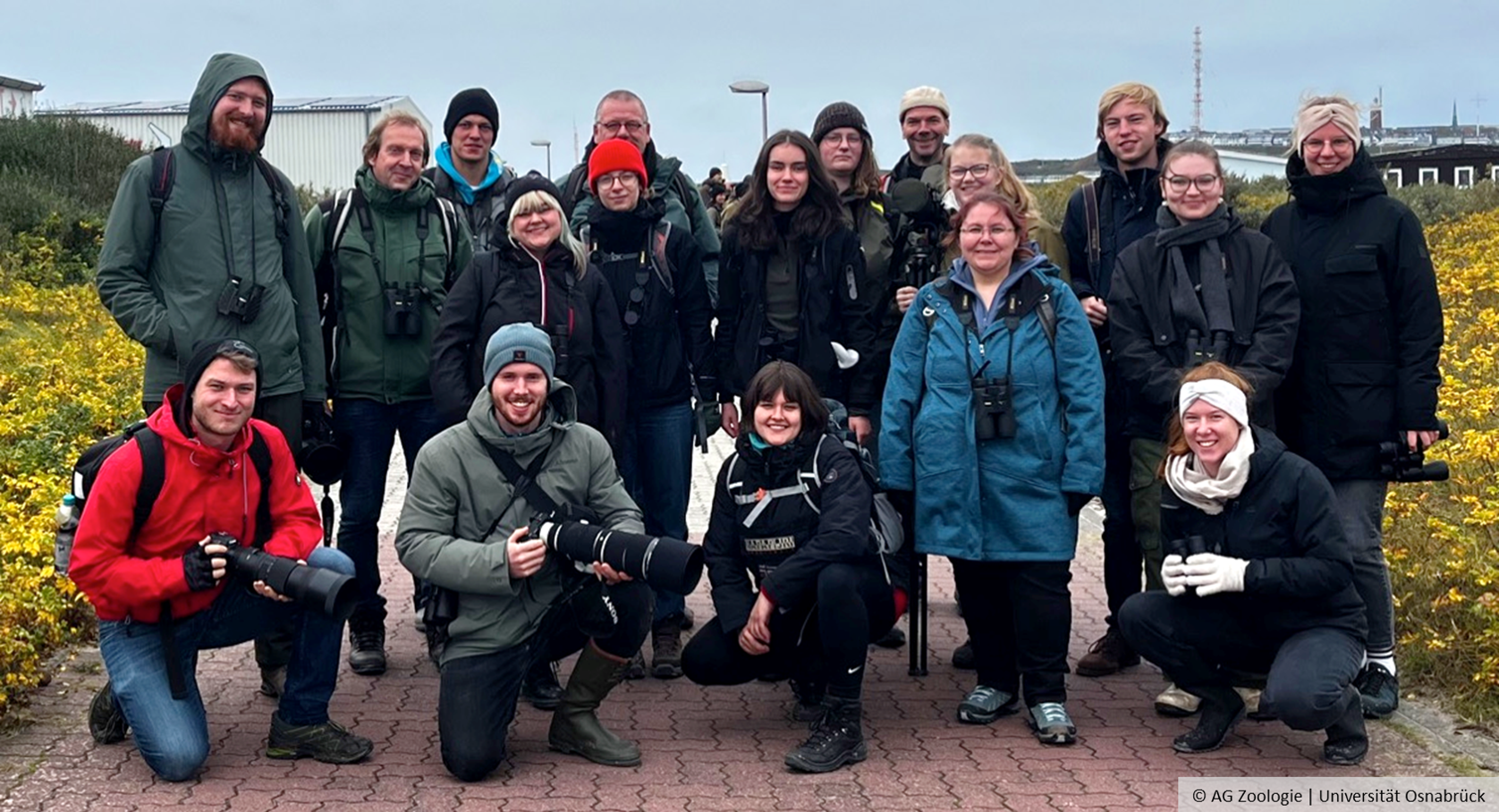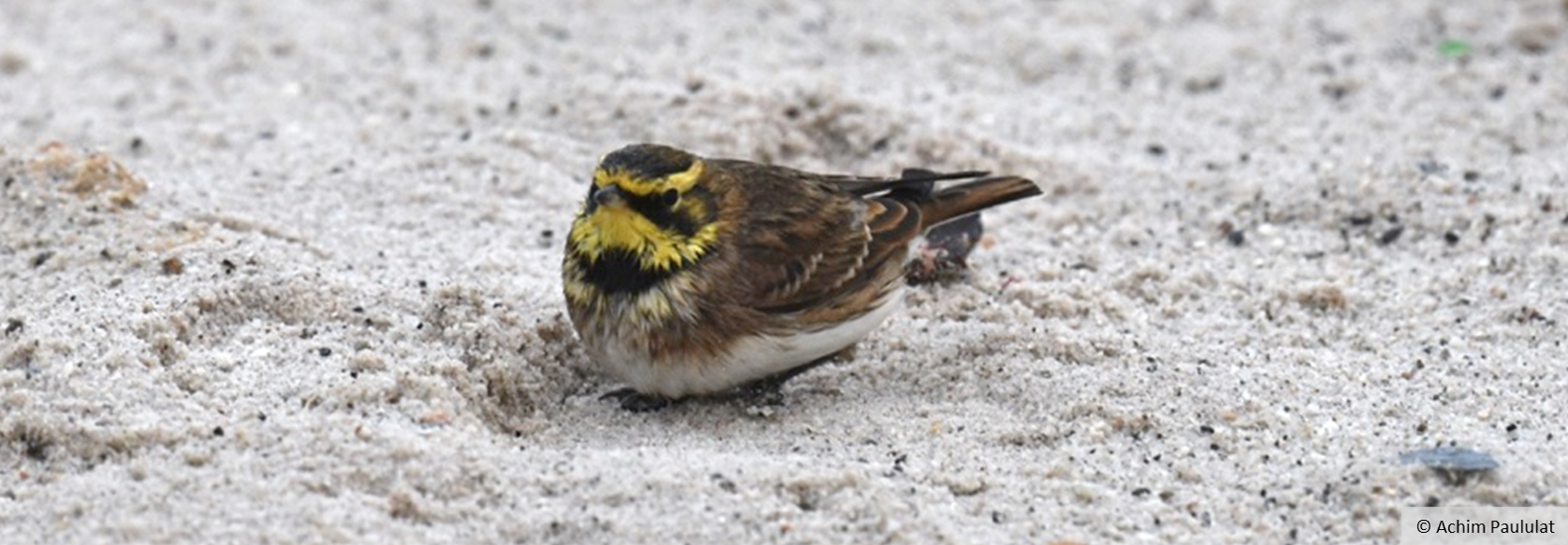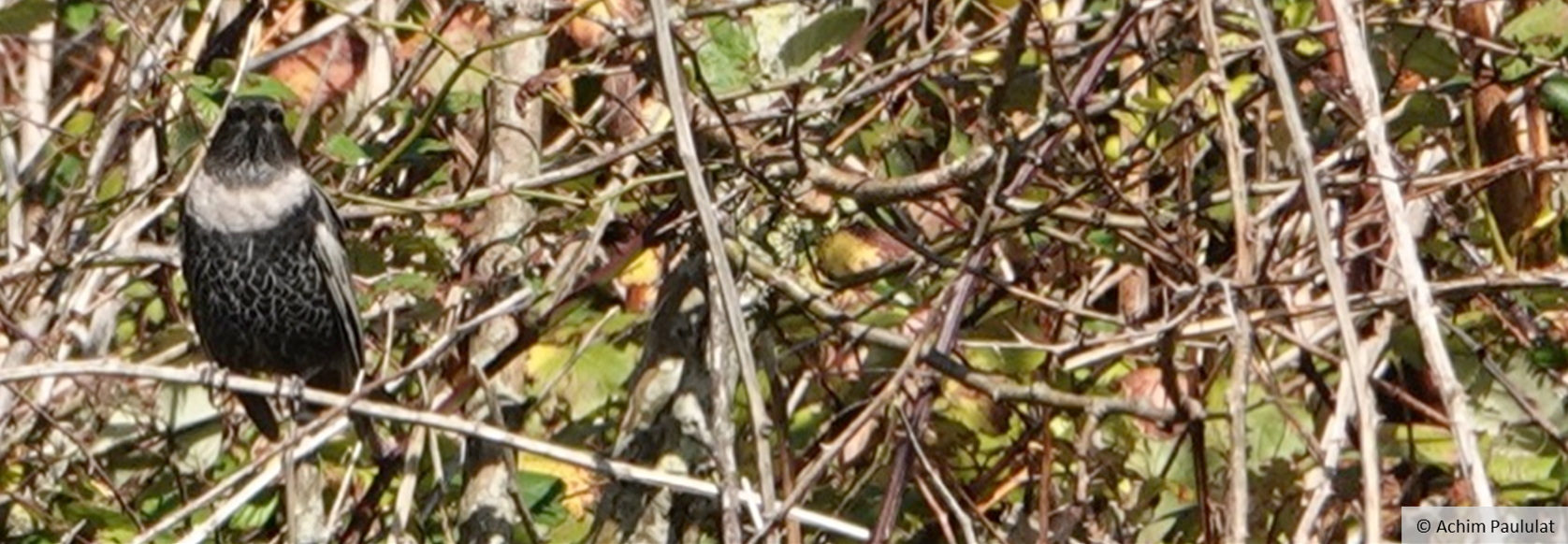Main content
Top content

The participants of the excursion with their lecturers.
From dunlin to little bunting: students discover almost eighty bird species on Heligoland excursion
11.11.2024
In October, 18 students said: ‘Off to the island’. Together with their lecturers from the Zoology research group, they went on an ornithological excursion to Heligoland. Equipped with binoculars and spotting scopes, the group spent several days on the North Sea island and were able to observe a total of 79 bird species up close - including some species that are rarely seen.
The following report by the excursion guides gives a good impression of the group's experience during the ornithological excursion:
In autumn, Heligoland becomes an Eldorado for amateur birders and professional ornithologists. This is when numerous migratory birds come to rest on the small North Sea island. They are looking for food, fresh water and rest from the sometimes long journey from Siberia or Scandinavia to their wintering grounds in the south. On Heligoland, they then gather the strength to continue their migration to southern Europe, Africa or the Middle East. In autumn, you can therefore reliably observe horned larks, Lapland buntings, goldcrests and many other rare bird species at close range. Even if the success of an excursion is not measured by the number of species seen, we are delighted to have spotted a total of 79 different bird species this year.

A horned lark on Heligoland.
The start this year didn't quite go to plan at first: it began with a storm warning and the cancellation of the Heligoland ferry. So we set off from Cuxhaven a day late. The crossing took about 2.5 hours in calm seas - there were no students ‘feeding the fish’ this time. On Heligoland, we stayed in the perfectly equipped Wilhelm Mielck Guest House, which belongs to the Biological Institute Heligoland (BAH) / Alfred Wegener Institute (AWI). It offers functional rooms, a kitchen for self-catering (social cooking) and a lounge with a sea view.

Extremely rare: A ring ouzel.
After breakfast together in the morning, the binoculars and spotting scopes that are part of our excursion equipment are unpacked and the best observation spots on the island are sought out. Current sightings are promptly posted by ‘birders’ on ornitho, the Helgoland OAG or in other relevant forums. Some students also managed to observe quite rare bird species. On the dune, for example, a Pallas's leaf warbler attracted a lot of attention, first at the airport, then at the barbecue and golf pond, two of the best observation spots on the dune. Some extremely rare ring ouzels were then observed on the last day of the excursion in the ‘Mittelland’. In the evening, we analysed photos and observation notes, identified species from the photos and discussed species-specific characteristics.
We very much hope that all the students had as much fun observing the birds as the three supervising lecturers, Carsten Dense, Heiko Harten and Achim Paululat.
More photos from the excursion
Pictures of our accomodation and the island
Evaluation results of the excursion
The date for next year's Heligoland excursion has already been set: 09.10 - 14.10.2025. The excursion will then take place as a new excursion focus module, which means six days on Heligoland, plus a lecture seminar with meetings in advance and lectures by students during our stay.







